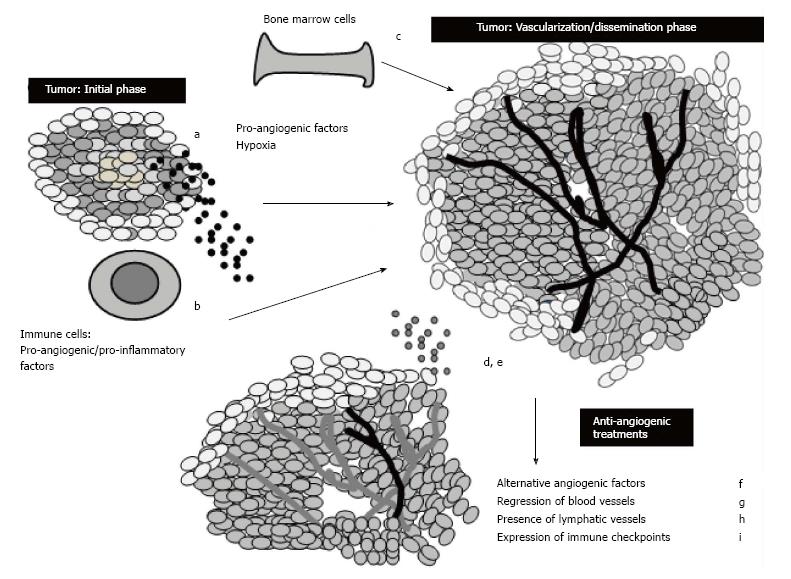Copyright
©The Author(s) 2017.
World J Clin Oncol. Apr 10, 2017; 8(2): 120-134
Published online Apr 10, 2017. doi: 10.5306/wjco.v8.i2.120
Published online Apr 10, 2017. doi: 10.5306/wjco.v8.i2.120
Figure 2 Resistance mechanisms to anti-angiogenic therapy.
During the initial development, tumor cells that are in the core of the tumor, become hypoxic and secrete pro-angiogenic factors (a); Proangiogenic factors are also produced by immune cells (b) and bone marrow cell participate in tumor vascularization (c); The amplification of cancer cell genome stimulates high gene expression levels, consequently, requiring an increased anti-angiogenic drug concentration (d); Tumors have evolved to switch from various modes of vascularization, in order to ensure a sufficient supply of nutrients, such as sprouting angiogenesis, vasculogenesis, vessel co-option as well as vascular mimicry (e); Various pro-angiogenic factors that are redundant of VEGF are secreted by tumor and stromal cells in malignant cancers (f); In response to the treatments, blood vessels regress (g) and tumor cell produced alternative proangiogenic prolymphangiogenic factors with the development of a lymphatic network (h); Tumor cells also express immune checkpoints proteins resulting in immune tolerance (i).
- Citation: Masoud V, Pagès G. Targeted therapies in breast cancer: New challenges to fight against resistance. World J Clin Oncol 2017; 8(2): 120-134
- URL: https://www.wjgnet.com/2218-4333/full/v8/i2/120.htm
- DOI: https://dx.doi.org/10.5306/wjco.v8.i2.120









